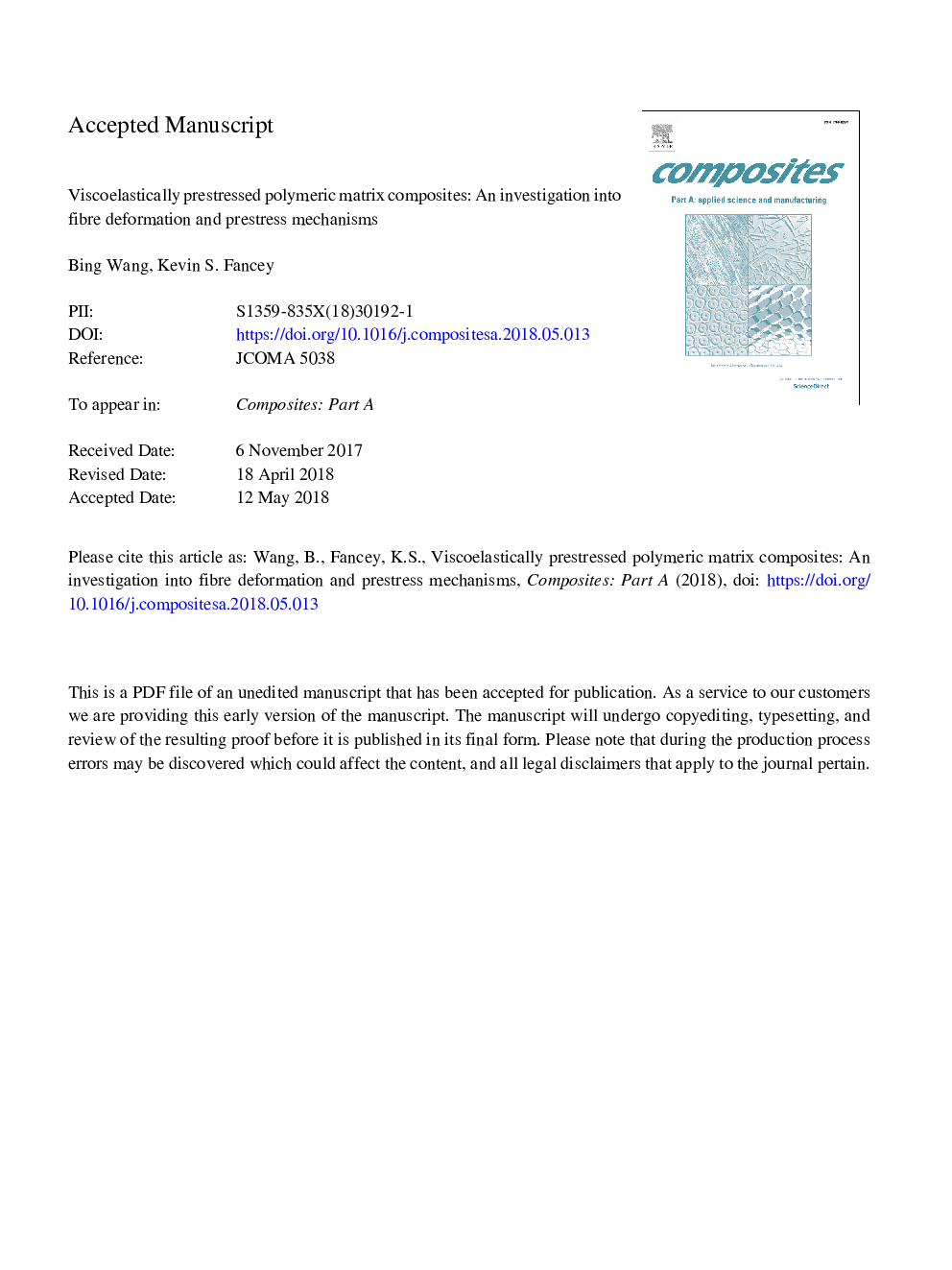| Article ID | Journal | Published Year | Pages | File Type |
|---|---|---|---|---|
| 7889408 | Composites Part A: Applied Science and Manufacturing | 2018 | 23 Pages |
Abstract
A viscoelastically prestressed polymeric matrix composite (VPPMC) is produced by subjecting polymeric fibres to a creep load, which is removed before moulding the fibres into a polymeric matrix. The resulting fibre viscoelastic recovery creates compressive stresses within the cured matrix. Although mechanical properties can be improved by up to 50%, the effect of fibre creep stress magnitude on VPPMC performance is unknown. In this paper, viscoelastic effects were investigated for 24â¯h creep stress values of 330-590â¯MPa. This involved recovery force measurement and wide-angle X-ray diffraction (WAXD) on nylon 6,6 fibres and Charpy impact testing of nylon fibre-polyester resin VPPMCs. Greatest performance was achieved with an intermediate value (460â¯MPa), suggesting an optimum creep stress condition. Moreover, with increasing creep stress, WAXD demonstrated a progressive reduction in regions with viscoelastic energy storage capability. By considering polymeric three-phase microstructural and latch-based mechanical models, a viscoelastic fibre-generated prestress mechanism is proposed.
Keywords
Related Topics
Physical Sciences and Engineering
Materials Science
Ceramics and Composites
Authors
Bing Wang, Kevin S. Fancey,
